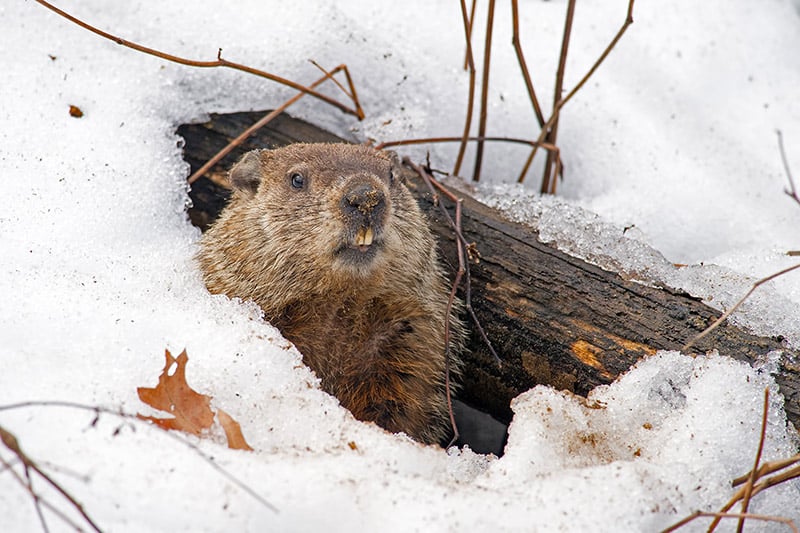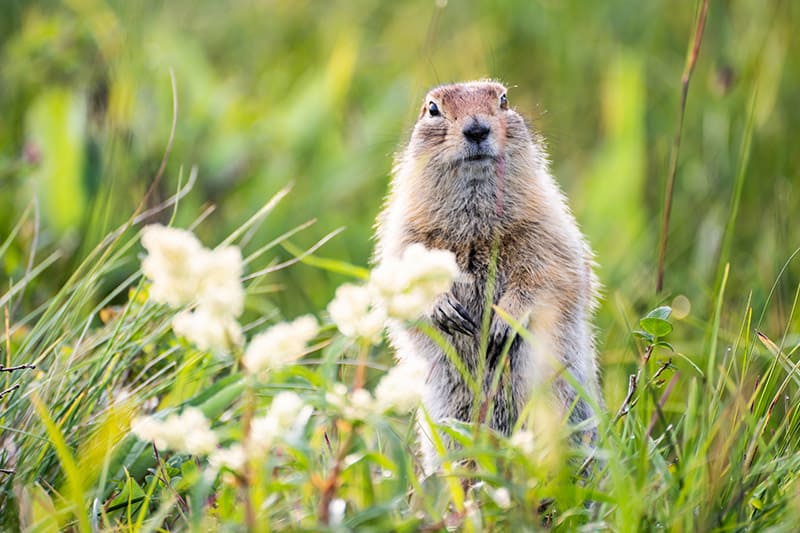In commemoration of Groundhog Day I figured that the Groundhog is the perfect animal to talk about this week! Although Groundhogs are not considered a normal pet, they are very well-known little animals. Groundhog Day falls on February 2nd every year and is traditionally a forecast of when spring will arrive. Groundhogs will hibernate throughout the winter and then pop up on Groundhog Day. The theory goes that if the groundhog sees its shadow then there will be 6 weeks of winter left. If it cannot see its shadow, then spring is just about to start! Of course, it doesn’t always work out this perfectly, but it is a somewhat helpful tradition!

The Groundhog Marmota monax is native to North America and can be found over most of the United States. Some people know them as Woodchucks and they are actually rodents! These are one of 14 species of marmots and marmots belong to the Squirrel family. Groundhogs are the biggest members. Their average weight varies anywhere from 4 to 9 pounds and in some regions they can even reach upwards of 30 pounds! In length they are in the general range of 16 to 26 inches. The fur of a Groundhog has two layers. One dense and short undercoat, and one longer and thinner overcoat which consists of banded guard hairs.
They tend to stuff themselves full of food all through the summer time. This way they will have enough fat built up in their body to keep them going through winter. They reach their heaviest mass around the end of summer. By October they are becoming lethargic and looking for a place to burrow down for the winter. They then spend all winter hibernating and asleep in their underground dens. While sleeping their heart rate slows way down, allowing their body temperature to drop. Their temperature can actually get down to around 40 degrees Fahrenheit. That’s pretty low! This keeps them from needing as much energy. When they wake up in February Groundhogs have often lost about half of their body weight.

Groundhogs usually live in grassland areas near woods and rivers. This suits their diet well because they have access to a large variety of plants, grasses, and fruits. They also get their water from eating luscious plants. Farms are a favorite place of theirs as well because this helps ensure they have food! Which of course can be quite a dilemma for farmers, who depend on these crops. During their non-hibernation time Groundhogs are very active little critters! Believe it or not, they can climb trees and swim through water! Every Groundhog digs out a burrow with their powerful arms and thick claws. Often more than one groundhog can be seen living together and they will build very large burrows. These burrows will have several entrances to allow quick escape from predators.
Groundhogs can live around 6 years in the wild but in captive environments have been noted to live as long as 14 years. Most Groundhogs can begin breeding in their second year of life. In March or April, after they’ve awoken from hibernation, a pair of Groundhogs will mate and then stay in a burrow together. Mother Groundhogs produce litters of around two to six young after 31 or 32 days of gestation. It takes a couple months for the young to open their eyes, grow fur, wean, and begin searching for their own areas to burrow. During this time the babies mimic their mothers behavior to learn how to fend for themselves. Many young are preyed on by snakes. Older Groundhogs have to look out for other predators as well, such as foxes, hawks and bears.

Groundhogs are not usually kept as pets. However many zoos and other wildlife habitats do keep them for the general public to come and see. And of course many farmers are familiar with them as well. Farmers consider them pests and deal with them as such. Groundhogs are also hunted for sport in many places. This helps somewhat in keeping their numbers in check.
If you think the Groundhog is cute and would like to keep a similar animal as a pet, check out all these different types of Small Animals! I hope you enjoyed learning a little bit more about the Groundhog!
Jasmine is a team member at Animal-World and has contributed many articles and write-ups.
Featured Image Credit: Egoreichenkov Evgenii, Shutterstock
